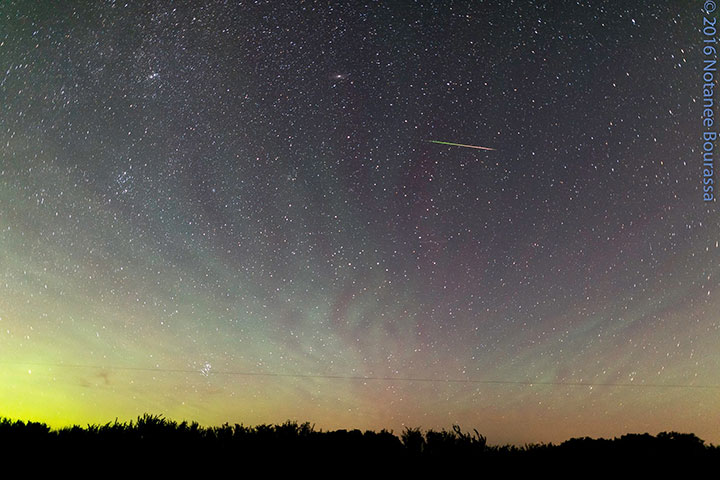The Perseid meteor shower was expected to put on a great show last night and, if you had clear skies, you likely weren’t disappointed.

READ MORE: How you can watch the Perseid meteor shower
People around the world were able to see meteors streaking across the sky, from dim ones to fireballs.
https://twitter.com/raulroa/status/764102332837601280/photo/1
https://twitter.com/jperez1690/status/764100247039512577/photo/1
The Perseid meteor shower occurs every year and is best seen from North America where the constellation Perseus (the area from which the meteors appear to emerge, hence the name) rises high in the night sky.

Get daily National news
On average, the Perseids have a maximum of around 100 meteors per hour in dark skies. This year’s activity was predicted to be double that, a result of Jupiter’s gravity having moved the stream closer to Earth’s orbit.
https://twitter.com/Bonnie0125/status/764099996220321793/photo/1
https://twitter.com/aleixandrus/status/764096121115283461/photo/1
If you were clouded out, don’t fret: Earth is still in the stream of debris shed by Comet 109P/Swift-Tuttle. As Earth passes through the stream left over from its earlier orbits, the dust grains burn up in our atmosphere, producing the meteors we see. And, though the Perseid shower runs from July 13 to Aug. 26 and peaked Thursday night into Friday morning, you will likely still be able to see meteors tonight and over the weekend.
https://twitter.com/RonBaalke/status/764103176433770497
WATCH: What causes meteor showers?













Comments